#Louvre Palace
Explore tagged Tumblr posts
Text

Louvre Pyramid, Paris, France: The Louvre Pyramid is a large glass-and-metal structure designed by the Chinese-American architect I. M. Pei. The pyramid is in the main courtyard of the Louvre Palace in Paris, surrounded by three smaller pyramids. Wikipedia
419 notes
·
View notes
Text
The Pavillon Sully, Louvre, Paris. ꒷︶🏛️︶꒷


#Louvre Museum#Pavillon Sully#Napoleon Courtyard#Pavillon de l'Horloge#Cour Carree#Cloudy Sky#Louvre Palace#French Moments#Architecture#Window#Flag#Louvre#Museum#Paris#France
82 notes
·
View notes
Text

... endless amount of knowledge ...
National Library of France, Paris
It traces its origin to the royal library founded at the Louvre Palace by Charles V in 1368. As France’s most important library, it houses over 12 million printed books, 180,000 manuscripts, prints, maps, and other valuable collections.
#endless amount of knowledge#library#libraries around the world#national library of france#paris#louvre#louvre palace
37 notes
·
View notes
Text







#louvre#louvre museum#paris#france#museum#mona lisa#leonardo da vinci#artworks#restoration#renovation#conservation#louvre palace#louis XIV#royal art collection#I.M Pei#le parisien
17 notes
·
View notes
Text

Can You Go Inside the Palais Royal in Paris
#Palais Royal#architecture#paris#travel#louvre palace#kensington palace#crystal palace#buildings#tower
0 notes
Text
Discover Film and Art: Movie Magic at Louvre Abu Dhabi
Good news for all movie and art lovers! The Louvre Abu Dhabi has made your Saturday nights more magical by introducing open-air cinema! Every Saturday night, the museum will screen some of the most iconic movies, making it the perfect way to kickstart your weekend. Read on to learn more about the movie lineup and all the show details.
Cinematic Evenings at the Louvre Abu Dhabi
Planning a date night or want to experience art through cinema? The movie nights at the Louvre Abu Dhabi are an ideal choice! As one of Abu Dhabi's top tourist attractions, the museum uniquely blends culture and entertainment. Starting from January 11 at 7 PM, these Saturday movie nights promise an artistic journey through the lens of cinema. Don't miss out on this special event!
Exclusive Tour Alert: Book your Louvre Museum Abu Dhabi Tickets now to enhance your experience with a guided tour of this magnificent museum.
Movie Lineup at the Louvre Abu Dhabi
1. At Eternity's Gate (2018)
Date: January 11, 2025
Time: 7 PM
Details: Dive into the life of Vincent Van Gogh, the 'Tortured Genius,' through this biopic starring Willem Dafoe. Witness his struggles with psychological issues and artistic brilliance.
2. Loving Vincent (2017)
Date: January 25, 2025
Time: 7 PM
Details: Experience the world's first fully painted film, a visual masterpiece that explores the final days of Van Gogh through a unique narrative.
3. Frau Im Mond (1929)
Date: February 8, 2025
Time: 7:30 PM
Details: For science fiction enthusiasts, this German classic offers a gripping story about space exploration, making it a must-watch for astronomy fans.
4. The Adventures of Tintin (1991)
Date: February 22, 2025
Time: 7 PM
Details: Relive the adventures of Tintin and his loyal dog Snowy. This screening will be a delightful evening, perfect for families and nostalgic 90s kids.
Why You Shouldn't Miss It
Celebrate Creativity: The movie screenings are more than just a cinematic experience—they're a celebration of creativity. Immerse yourself in art and connect with others through shared stories and visuals.
Diverse Film Selection: Enjoy a curated mix of contemporary classics, family-friendly films, and award-winning masterpieces that explore imagination, art, and history.
Perfect for Families and Friends: These movie nights offer a fantastic bonding opportunity. Whether it's a family outing or a night with friends, the Louvre Abu Dhabi's serene environment is perfect for relaxation and enjoyment.
Comfortable Ambience: With cozy seating and ample space, the museum ensures a comfortable viewing experience. Arrive 20-30 minutes early to settle in and enjoy the show.
Seamless Transportation: Avoid the hassle of public transport with our reliable transportation services, ensuring a smooth journey to and from the museum.
Conclusion
Make your weekends unforgettable with the Saturday movie nights at the Louvre Abu Dhabi. If you're planning a trip to Abu Dhabi or the UAE, contact Skyguru Travel-Tourism LLC for comprehensive travel solutions. We offer tickets to the Louvre Museum, city tours, and even assistance with Abu Dhabi Visit Visas. Let us help you create memories that last a lifetime. Book your tickets now!

#dubai#uae#best travel agency#tour operator#abudhabi#louvre museum#louvre palace#museum#book now#louvre abu dhabi#dubailife#dubai visa#ajman
0 notes
Text

PALAIS DU LOUVRE
296 notes
·
View notes
Text

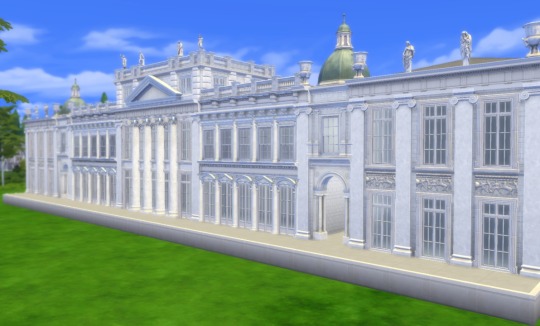
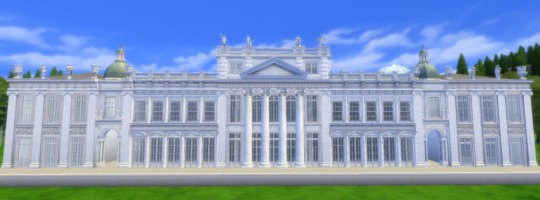
Growing slowly - Whitehall Palace
So cherry picking from two different designs by Wren and Hawksmoor is as fun as it is frustrating. I guess Jones is here too while Vanbrugh is silently shading influence from a quietly loud corner. Interiors no doubt to be provided by a talented team, especially @stereo-91
65 notes
·
View notes
Text
ITS CHARLOTTE CHARADES BIRTHDAY!!! Happy international moment of laughter day! 🤣 Joyeux Anniversaire Charlotte!!!! 🖤🤍🖤🤍🩷🩷❤️❤️🥳🥳🥳🥳🥳🥳🥳🥳


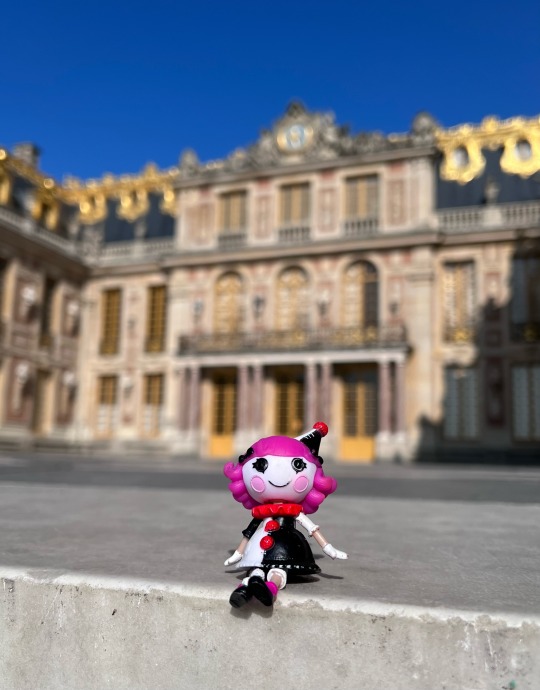

#lalaloopsy#birthday#lalaloopsybirthdays#dolls#april#france#french#charlotte#charades#mime#mimes#paris#eiffel tower#versailles#palace of versailles#mona lisa#louvre
16 notes
·
View notes
Text

Louvre 2023
5 notes
·
View notes
Text
Louvre, Paris. ꒷︶🏛️︶꒷

#Louvre Museum#Renaissance#Architecture#Louvre Pyramid#Napoleon Courtyard#I. M. Pei#Pyramids#Pavillon Richelieu#Pavillon Colbert#Cloudy Sky#Louvre Palace#French Moments#Louvre#Museum#Paris#France
89 notes
·
View notes
Photo
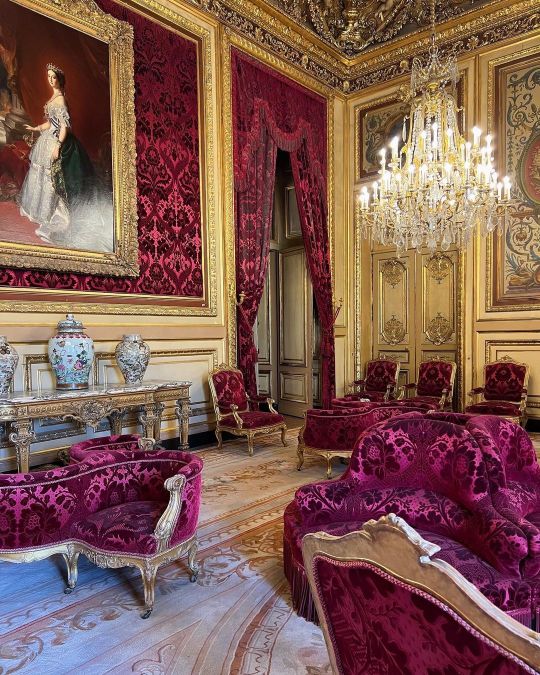
The Napoleon III Apartments at the Louvre, part II. #museedulouvre #louvre #paris #france #napoleon #napoleoniii #napoleoniiiapartments #museum #gallery #palace #royalpalace #apartments #empirestyle #secondempire #empresseugenie #velvet #gold #art #artworks #decor #decoration #frenchdecorativearts #frenchdecorativeantiques #19thcentury #interiors #interior #interiordecor #interiordecorating #interiordecoration #interiordecorator (at Musse Du Louvre Paris, France) https://www.instagram.com/p/CqVmjuAI61l/?igshid=NGJjMDIxMWI=
#museedulouvre#louvre#paris#france#napoleon#napoleoniii#napoleoniiiapartments#museum#gallery#palace#royalpalace#apartments#empirestyle#secondempire#empresseugenie#velvet#gold#art#artworks#decor#decoration#frenchdecorativearts#frenchdecorativeantiques#19thcentury#interiors#interior#interiordecor#interiordecorating#interiordecoration#interiordecorator
6 notes
·
View notes
Text

Is It Worth Visiting the Grand Trianon in Paris
1 note
·
View note
Text
Paris Tour: A Wanderer’s Love Affair
Ah, Paris! The city of love and romance. Embarking on a wanderer's love affair in Paris is a truly magical experience. With its charming streets, breathtaking architecture, and world-famous landmarks, Paris offers a plethora of opportunities to explore, discover, and fall in love with its essence. Here's a suggested itinerary for a romantic tour of Paris:
Day 1: Arrival and Seine River Cruise
Begin your journey by arriving in Paris and settling into your accommodation.
Start your exploration with a relaxing Seine River cruise. It offers panoramic views of the city's iconic landmarks, including the Eiffel Tower, Notre-Dame Cathedral, and the Louvre Museum. It's the perfect way to immerse yourself in the beauty of Paris.
Day 2: Montmartre and Sacré-Cœur
Head to the charming neighborhood of Montmartre, known for its bohemian atmosphere and artistic history.
Visit the Sacré-Cœur Basilica, a stunning white-domed church perched on top of a hill. Climb the steps to reach the basilica and enjoy breathtaking views of the city.
Wander through the narrow streets of Montmartre, discovering its artistic heritage, quaint cafes, and picturesque corners.
Day 3: Louvre Museum and Tuileries Garden
Spend the day exploring the Louvre Museum, home to thousands of masterpieces, including the enigmatic Mona Lisa. Marvel at works of art from various periods and civilizations.
After the museum, take a leisurely stroll through the adjacent Tuileries Garden. Enjoy the manicured lawns, flowerbeds, and beautiful sculptures. Find a bench to relax and take in the atmosphere.
Day 4: Île de la Cité and Sainte-Chapelle
Discover the historic heart of Paris by visiting Île de la Cité, the island where the city was born.
Explore the stunning Sainte-Chapelle, renowned for its exquisite stained glass windows that depict biblical scenes.
Don't miss a visit to the magnificent Notre-Dame Cathedral, a masterpiece of Gothic architecture. Although it was heavily damaged in a fire, it still holds immense beauty and historical significance.
Day 5: Champs-Élysées and Eiffel Tower
Take a walk down the iconic Champs-Élysées, known for its luxury shops, cafes, and theaters.
Reach the end of the avenue to find the monumental Arc de Triomphe. Climb to the top for panoramic views of Paris.
In the evening, make your way to the Eiffel Tower. As the sun sets, witness the tower lighting up, creating a magical ambiance. Consider enjoying a romantic dinner at one of the restaurants nearby.
Day 6: Palace of Versailles
Take a day trip to the Versailles Palace, located just outside Paris. Explore the opulent palace, its stunning gardens, and the Hall of Mirrors.
Spend the day immersing yourself in the grandeur and history of this UNESCO World Heritage site.
Day 7: Boat Picnic on the Canal Saint-Martin
Experience the local vibe by having a boat picnic on the Canal Saint-Martin. Rent a small boat and leisurely cruise along the canal, enjoying the charming scenery.
Pick up some delicious pastries, bread, cheese, and wine from local shops to enjoy during your boat ride.
This itinerary offers a taste of the romantic wonders Paris has to offer. Remember to embrace the city's ambiance, indulge in delicious cuisine, and create your own special moments as you wander through its streets. Enjoy your wanderer's love affair in the City of Light!
1 note
·
View note
Photo
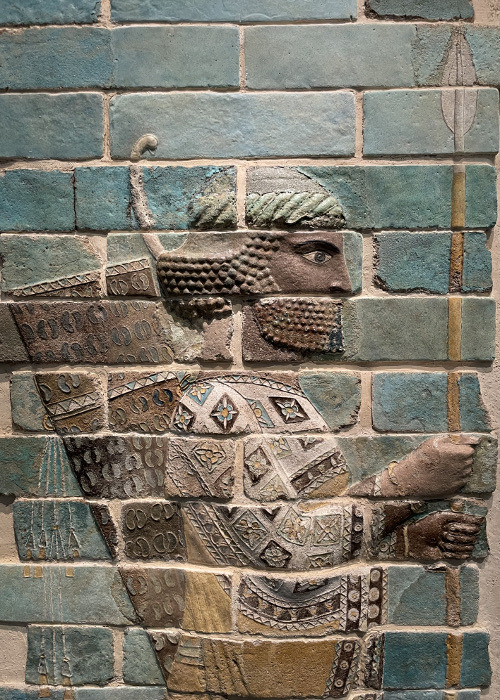
Glazed bricks depicting a Persian archer, dating back to around 510 BCE, from the city of Susa in the Achaemenid Empire. This glazed brick bas-relief style was perfected in Babylon, and even the Foundation Charter of the Susa palace states that the baked bricks at the palace were the work of the Babylonians. Louvre Abu Dhabi, Abu Dhabi, UAE.
Photo by Babylon Chronicle
3K notes
·
View notes
Text
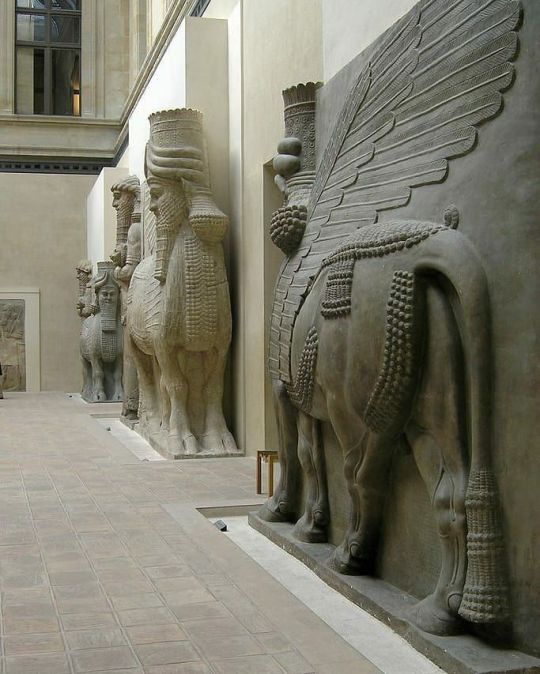
Lamassu, a kind of supernatural beings, lower than the gods with whom they share their nature and privilege. Good Lamassu
Lamaşşu, doğalarını ve ayrıcalıklarını paylaştıkları tanrılardan daha düşük bir tür doğaüstü varlıklar. İyi Lamaşşu.
1 note
·
View note